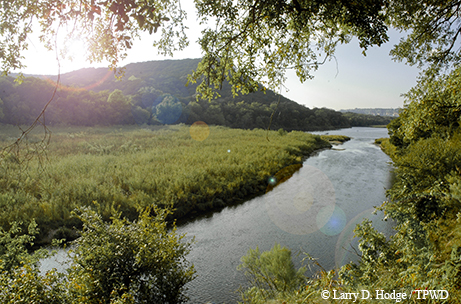Benefits of Healthy Riparian Zones
Wednesday, July 20th, 2016This is Passport to Texas
A riparian zone is a transitional area between a stream or river and an upland ecosystem. Conservation ecologist, Ryan McGillicuddy says these strips of land, which can be from 25 to over 200 feet wide, perform vital ecological functions.
They provide excellent habitat for fish and wildlife both in stream and on the land. The leaf litter provides nutrient contributions. The fallen logs provide structural habitat in the stream for fish and wildlife. A lot of the nutrient and diet for some of our sport fish species and the food web within the channel comes from a land source. Structurally, riparian zones provide a number of functions. The plant roots act like rebar and hold the banks of the channel together to resist the force of erosion.
When rain events cause streams and rivers to overflow their banks, riparian zones are the first line of defense.
If you have an intact, healthy riparian zone, it will slow the forces of floodwaters. It will help capture sediment, filter nutrients, slow runoff from upland sources…
These healthy riparian zones also soak up water like a sponge, adding to stream flow during drier times.
Unfortunately, a lot of the land use practices over the last 150 years from really intense settlement have altered the natural state of some of these riparian zones.
Tomorrow: When riparian zones are weakened.
The Wildlife and Sport Fish Restoration program supports our series.
For Texas Parks and Wildlife, I’m Cecilia Nasti.



 Passport to Texas is a
Passport to Texas is a  Passport to Texas is made available by:
Passport to Texas is made available by: